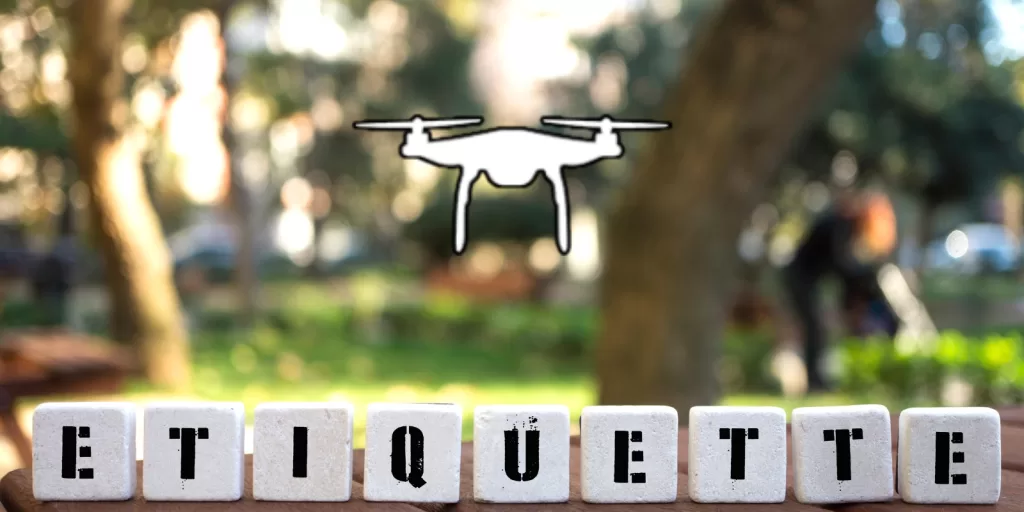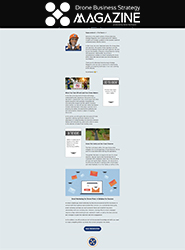
As the drone industry continues to soar to new heights, the role of commercial drone pilots becomes increasingly vital. These skilled aviators are not only responsible for capturing stunning aerial footage and data but also for upholding the highest standards of professionalism and etiquette.
In this article, we will explore the essential aspects of drone pilot etiquette, focusing on where, when, why, and how you fly your drone, and offering insights into handling encounters with the public and law enforcement. Moreover, we’ll delve into the profound value of conducting our drone business and pilot behavior using proper etiquette, considering the bigger picture before, during, and after our flights in the public domain.
The Value of Proper Drone Business and Pilot Behavior
Before delving into the specifics of drone pilot etiquette, it’s crucial to understand the profound impact it has on the drone industry and society as a whole. Conducting drone business and pilot behavior with proper etiquette goes beyond mere courtesy; it shapes the industry’s reputation and the public’s perception.
1. Fostering Trust and Acceptance
Operating drones in the public domain requires the trust and acceptance of the communities we serve. Proper etiquette demonstrates that commercial drone pilots are responsible stewards of this transformative technology. When communities see drone pilots conducting themselves professionally and respectfully, they are more likely to embrace the benefits drones can offer.
2. Promoting Safety and Accountability
Safety is paramount in the world of drones. By adhering to etiquette guidelines and regulations, commercial drone pilots contribute to safer skies. Proper behavior ensures that drones are used responsibly, reducing the likelihood of accidents, injuries, or damage to property.
3. Paving the Way for Future Innovation
The success of the drone industry hinges on its ability to integrate seamlessly into our daily lives. Demonstrating good etiquette during drone flights helps pave the way for more widespread and innovative applications. As public acceptance grows, opportunities for drone use in various sectors, from agriculture to healthcare, expand as well.
4. Influencing Regulatory Frameworks
The actions of commercial drone pilots directly impact the development of drone regulations. By conducting business with etiquette and responsibility, pilots contribute to a positive image of the industry. This, in turn, can influence regulators to create more favorable conditions for drone operations.
Problems: Challenges of Drone Pilot Etiquette
1. Location Matters
One of the most common challenges commercial drone pilots face is selecting the right location for their flights. Inappropriate flying locations can disrupt daily life, endanger public safety, and lead to legal consequences.
Solution: Always research and comply with local regulations and airspace restrictions. Before flying, check for any Temporary Flight Restrictions (TFRs) and ensure you have permission to fly in restricted areas. Additionally, use drone apps and maps to identify suitable flight locations away from densely populated areas.
2. Timing is Crucial
Choosing when to fly your drone is as important as where you fly it. Operating during inappropriate hours can lead to noise complaints and potentially disturb wildlife during mating or nesting seasons.
Solution: Abide by local noise ordinances and regulations regarding flight times. Plan your drone operations to avoid disturbing people or wildlife during sensitive times. This shows respect for both the environment and the community.
3. Purposeful Flying
Understanding why you are flying your drone is key to maintaining good etiquette. Aimless or intrusive flights can lead to privacy concerns and negative public perception.
Solution: Always have a clear and legitimate purpose for your drone flight. Whether it’s for mapping, monitoring, or capturing images, communicate your intentions to anyone affected by your flight and respect their privacy.
4. Safe and Responsible Flying
Safety is paramount when piloting a drone. Irresponsible flying can result in accidents, property damage, or injuries to bystanders.
Solution: Invest in proper training and equipment to ensure safe operations. Follow pre-flight checklists and maintain situational awareness during flights. Be prepared to land your drone immediately if you detect any hazards.
Encounters with the Public and Law Enforcement
1. Engaging with the Public
Commercial drone pilots often encounter curious onlookers or concerned citizens during their flights. How you interact with them can greatly impact their perception of drones and drone operators.
Solution: Be approachable and willing to answer questions about your drone and its purpose. Educate the public about the benefits of drone technology and how it’s used responsibly. Maintain a polite and professional demeanor, which can go a long way in fostering goodwill.
Example 1: A Drone Pilot’s Encounter with a Concerned Homeowner
Meet Sarah, a commercial drone pilot with a mission to capture stunning aerial footage of a beautiful park for a promotional video. She carefully plans her flight for a sunny afternoon and ensures that she has obtained all necessary permissions to fly in the area.
- Problem 1: Location Matters: Sarah arrives at the park, and a concerned homeowner, Mr. Johnson, worries about privacy and noise.
- Solution 1: Location Matters: Sarah explains her permissions, assures Mr. Johnson about noise control, and shows her flight plan to address his concerns.
2. Law Enforcement Encounters
In some instances, law enforcement may approach you during a drone operation, either due to concerns from the public or suspicions about your activities. Knowing how to handle these encounters is crucial.
Solution: Remain calm and respectful when dealing with law enforcement. Always carry necessary documentation, such as your drone pilot certificate and flight authorization, and be ready to provide it upon request. Cooperate with their inquiries and follow their instructions to ensure a smooth encounter.
Example 2: A Drone Pilot’s Encounter with Local Law Enforcement
Meet Alex, an experienced commercial drone pilot hired to conduct a mapping survey of a construction site.
- Problem 1: Location Matters: A concerned neighbor, Mrs. Ramirez, worries about privacy.
- Solution 1: Location Matters: Alex explains his permissions and boundaries, assuring Mrs. Ramirez of his compliance.
Conclusion: The Takeaway
As commercial drone pilots, our responsibilities extend far beyond the act of flying a drone. Proper etiquette before, during, and after our flights is an investment in the future of the drone industry. It fosters trust, promotes safety, paves the way for innovation, and shapes the regulatory landscape. Ultimately, by conducting our drone business and behavior with grace and consideration in the public domain, we can lead the industry to even greater heights and ensure that drones are seen as tools of progress, rather than sources of disruption.
So, let’s continue to fly responsibly and uphold the highest standards of etiquette, for the skies are boundless, and the opportunities are endless.
Be smart, safe, and forever fly!
If you have any questions, let us know! If you’d like to hire us, you can get more information here.
Written by: Tony Marino, MBA – FAA Certified Part 107 Commercial Drone Pilot and Chief Business Strategist at Aerial Northwest
Disclaimer: The information provided in this blog post is for general informational purposes only and should not be construed as legal advice.
Resources

DRONE BUSINESS STRATEGY MAGAZINE
A free digital publication made exclusively for all small business drone pilots to them help start-up, become profitable while sustaining a competitive advantage within the drone service industry sector they opt to serve.
“If you love to fly, we’d love to have you come aboard!”
We share your information with no one. Our Privacy Policy.









Leave a Reply
Your email is always safe with us.